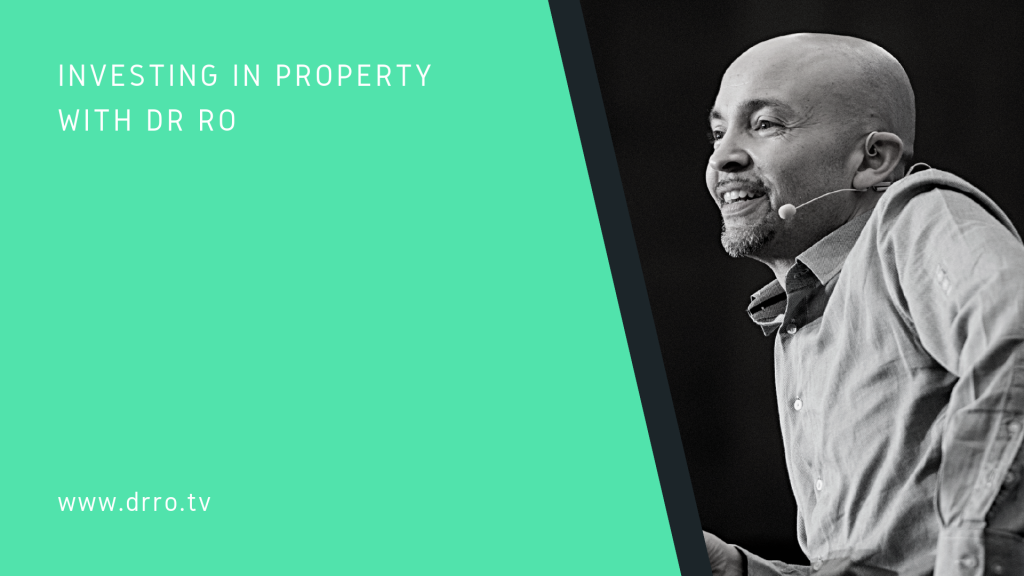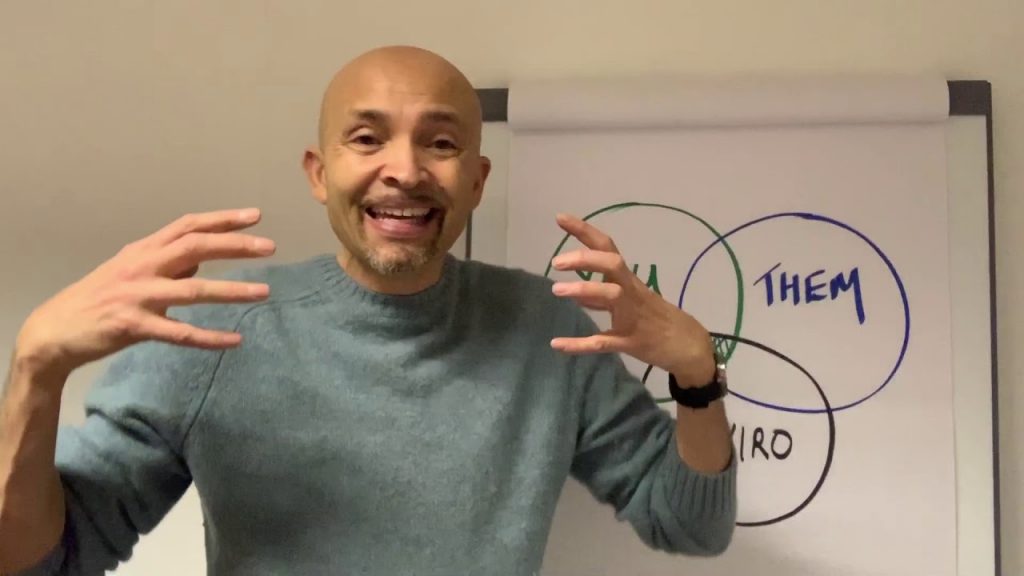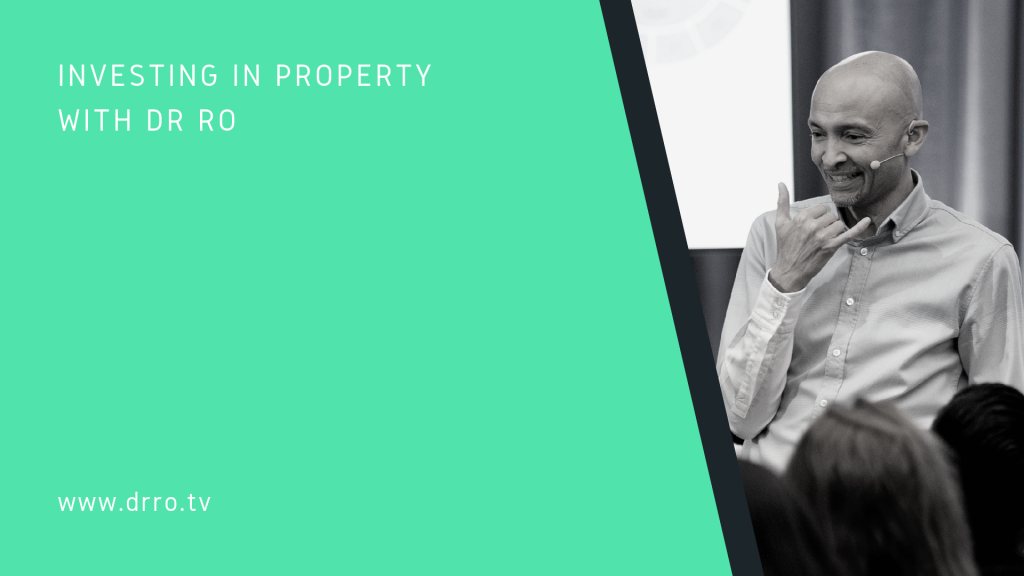https://www.youtube.com/watch?v=Uu-JvJwrDb4
Enhanced Transcribe:
Hello, it’s Dr Ro here!
Speaking to you from Perth in Australia. I’m actually filming this from my hotel room. What a beautiful view there, I think that is the Indian Ocean.
So, I am addressing the question which has been coming up relating to mortgages and how much can I borrow on a Buy To Let mortgage? Now that is a great question. And if you’re watching this and you’ve never bought properties at all, for an investment perspective, first things first. I’m not an independent financial adviser and if you’re watching this, you do need to go and seek independent financial advice from, for example, a mortgage broker. I’ll talk to you from the perspective as an investor, someone that has been buying properties for many years. And I want you to get a clear picture in your mind of the difference between a Buy To Let mortgage versus a residential home mortgage.
So in a nutshell, a residential mortgage that you’re buying, it’s your own home. They will look at you as an entity that the person is actually going to own the property and you’re going to pay the bills, you’re going to be paying the mortgage, so your affordability comes into a massive part of the calculation. The mortgage broker will sit down with you, the bank will look at your financial situation, they will look at what your outgoing costs are. So, for example, what do you spend on a monthly basis on eating out, what do you spend on general utilities? Do you have any loans? Do you have any outgoing costs? What’s your general lifestyle costs?
That all comes into play and they’ll calculate what the value of the house is you’re looking to buy, the mortgage on that, by the way the value is done by the valuation, the survey. They’ll look at the mortgage they’re prepared to lend you, and that will be based on your affordability. There will be an interest rate attached to that. So, depending on how much you can borrow the monthly mortgage payments could be this much, or it could be this much. So, of course, if you buy a bigger property or are looking to buy a bigger property, and the mortgage is higher then that means that your affordability has to be able to cover that higher mortgage. That’s how it works on a home property, and you’re normally restricted by typically in the United Kingdom, one home, one mortgage for yourself. Whereas when you’re looking at Buy To Let properties it’s totally different.
A Buy To Let property is treated as its own separate entity. And it has three primary considerations from the bank’s perspective. Now I’m broad stroking this, so you do need to go and talk to your independent financial adviser about this, your mortgage broker. But as a rule of thumb when you’re looking at an investment property, they say, okay, number one, what is the rent for that property? And they are looking for the rent to be greater than the mortgage by approximately 1.3 to 1.45, and that means they call it an income cover ratio. So, for example if they do a calculation on the property, and they calculate as a lender that the mortgage is £1000 per month. They’re looking for the rent in that area for potentially to be up to £1450. If the valuer goes out, assesses the property and establishes that the rent is £1300 a month, the bank will review that and they’ll say, okay well that’s not giving us enough income cover, in terms of that ratio. And what may happen is they either reduce the mortgage they were prepared to offer you. So, instead of getting for the sake of argument, £100,000 mortgage. They may only give you a £92,000 mortgage based on the calculations, and I’m just giving you broad numbers here, it will actually be calculated through their process. So, they assume a certain interest rate, they apply that interest rates to the amount of borrowing. That calculates what the monthly mortgage payments are, and then they’ll say does the rent exceed the mortgage by this much 1.31 to 1.45, and again as I’m recording this that may change, and each lender will have different criteria.
That’s a very important factor. So, if you haven’t done your research correctly. If you’ve got out and you’ve thought, this is a great property, I really like the look of it, you know it’s in an area that I really like. Which by the way, is not necessarily the reason to be buying that, and that is another conversation we can cover in another video. But let’s say you’ve gone through that process, and you’re like “yes!” And you’ve looked at the rent, and the rent is coming in at £1100, £1200 and the valuer comes out, and the banks say, “okay, actually, yes, you can rent this property out, and according to the valuer you can only get £11 or £1200 month. That means that we can’t lend you as much as you want to borrow.” And they’ll reduce the mortgage to give them that income cover ratio. That’s the first criteria.
Second thing that they are going to be looking at is the valuation of the property. So, you might think that it’s worth for the sake of argument £130,000 or £230,000, £300,000 or whatever the figure is. But just because you think that’s what it’s worth doesn’t mean to say that’s what the banks are going to assess it as. So, they’re going to send out the Royal Institute Chartered Surveyor, a valuer to go out and they will look at the property. Now what that valuer will do is they’ll assess the property based on the market conditions. And keep in mind that the valuation has to be in alignment with the property that’s selling for. So, for example, you might think, oh great the estate agent has told me I can put it on the market, or that the estate agents has told me it will sell for £200,000. You’re buying the property and the intention here is to buy at a discount.
No that’s great, ideally if you can get it a discount then you’re in the money to start with. You make money when you buy, remember that.
The valuer goes out, looks at the property and let’s say you’re in the £200,000 mark, and they come back and they value the property at £170. Immediately what the bank will do with that it is they’ll say, It’s worth £170, according to the valuer you’re thinking £200,000. You’ve done all your calculations based on £200,000. But the bank now are now going to do the calculations based on £170,000. So, they will give you what’s called a loan to value. Now the loan to value is either 0.7, 0.7, 0.5, 0.8, but typically you’re looking at 0.75. So, to keep it simple on a £200,000 purchase price, you would get 0.75, times £200,000 which is £150,000 pounds. If you’re looking at £100,000 property you get would 0.75 times £100,000 which is £75,000, that’s how it works. So, as long as you’ve done your research, as long as the property is at the value that you say it’s worth, and the valuer comes back and confirms that, that’s the second thing that the bank is happy about.
So, let’s go back to our valuation, and let’s say right the property has come in at the 200 that you were looking for, that’s great. That means you get 0.75 times 200, which is £150,000. That means you would have to put in £50,000 as a deposit. Remember the bank are giving you this much and you’re going to have to put the extra in. In a £100,000 property you’ll be putting in £25,000. On a £200,000 property you’ll be putting £50,000 in. Now that doesn’t include all the other fees and the stamp duty, and all those sorts of things, I’m not tackling that in this particular question. I’m tackling how much can I get on a Buy To Let mortgage? What’s the bank prepared to lend me?
So what have we got? We got the rent has to stack up. If the rent stacks up, great. The valuation has come back great at £200,000. The only other primary thing they’re going to take a look at and again, seek professional advice on this one. Would be relating to your credit history. Have you got a good credit history? Have you got a good credit score? Are you credit worthy? Have you got a bad credit history? And for example, you have not paid your credit cards in the past, or you’ve been late on loan payments, then your credit score will be lower. Now if your credit score is lower. There’s a strong chance that in a situation like that the bank are not prepared to lend to you, or they may be prepared to lend to you, but because you’re a higher risk, they’re going to reduce the loan to value to you. Or they might give you a loan with a very high interest rate very high being, for example at the moment on a Buy To Let, as I’m recording this, you might get let’s say 3%. If you’ve got a poor credit history, they might be charging you five, or five and a half, or six percent. Again, don’t quote me on that, go and seek professional advice. But I’m just showing you how this works, higher risk, usually higher interest rate you’re going to be charged, and possibly a lower loan to value. So instead of being offered 75%, they’re going to say, we are not going to put as much risk in this. Remember they’re going to put as much with a 75% mortgage, they’ve got the biggest skin in the game. You’ve only got 25% so they’re going to say okay, you got not such a great history, but we are prepared to lend to you, so we are going to put 60% down and you’re going to have to put more into this deal. That’s how it works.
So, let me recap when you’re buying a property as a Buy To Let property investor, usually what happens is they’re looking at three things. They’re looking at the income cover ratio, does the rent cover the mortgage by a certain percentage? They’re looking at the value of the property you’ve assessed it, but the valuer has to confirm that the value is correct for what you are buying it for. And the third thing is, they’re going to look at your credit history or background. They may also look at your salary, and that’s another thing that you’re going to have to discuss as well with the mortgage broker.
A little tip here. If you’re going to Buy To Let for the very first time. They are normally and again, you will need to seek advice on this, but they’re normally going to treat you as though you’re buying your own house for the first time. So, a brand-new landlord buying their first property, the Buy To Let mortgage will be treated more like your own home. So your affordability will play a bigger part in this. Whereas if you’ve got two or three Buy To Let’s under your belt already, you’ve been a landlord for say six months or more, that’s slightly different. Now you get access to different mortgage products which are more along the lines of, actually, it’s all about the property not so much about you. Again seek professional advice as I’ve been saying all along in this video.
But the point is, as you start to increase your property portfolio i.e. go beyond one or two properties, the type of lending opens up to you, and you’re less now treated as a homeowner more treated as an investor.
Hopefully that makes sense and it is clear to you. Again, this is just a guide to give you a starting point. The beautiful thing about this is, once you get past your first property or two, it means that you can keep buying and keep buying. Which is why people are able to build portfolios like ourselves, when we started, we bought a lot in the first few years. And then we started to change our strategy so then we said right, okay, instead of buying lots of little properties, let’s go for larger units and those will produce a higher cash flow, so that’s what you can do over time. And that’s a really important factor here.
A question I got asked recently, can I buy a property for cash?
Absolutely. If you buy a property for cash, for example, and it happens to be your first property, and then you go and refinance a property after six, seven months, now you’ve got a mortgage on that because you’ve been established as a landlord now for six, or seven months. That’s going to make mortgages hopefully the in the future easier for you, as long as you’re paying the mortgages on time, and behaving yourself with your credit files.
Okay so, that’s Dr Ro signing out.
I’m going to go have a walk by the Indian Ocean.
Hopefully that has helped.
Disclaimer: This video or written publication does not offer investment or financial advice and nothing in them should be construed as investment or financial advice. Our publications provide information and education only. The information contained in our publications is not, and should not be seen as a recommendation to use any particular investment strategy. Always seek financial advice from an independent financial adviser around your own personal financial situation.



